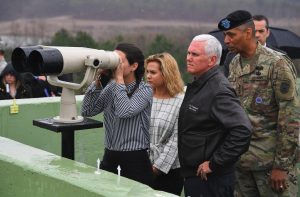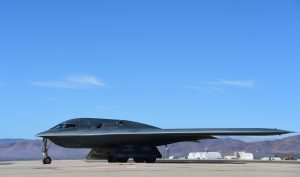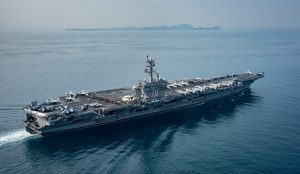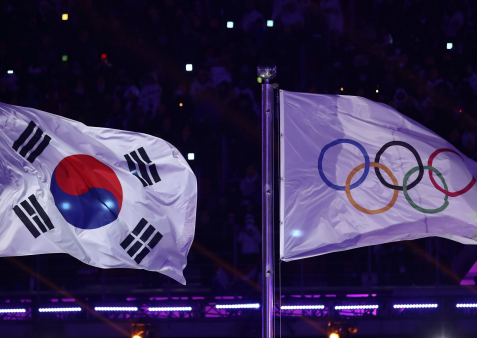Security has been one of the most pressing issues facing the international community as the world looks to the 2018 Olympics Winter Games, which kicked off Friday in Pyeongchang, South Korea.

The games come at a particularly tense moment between the United States and North Korea. Since taking office, President Donald Trump has repeatedly clashed with North Korean leader Kim Jong Un over the latter's ambition to build a nuclear arsenal.
Relations between the two nations have been especially fraught since November of 2017 when the North Korean regime completed what appeared to be its most successful test of an intercontinental ballistic missile.
In response to a speech that Kim made in January, where the North Korean strongman alleged he kept "nuclear button" on his desk at all times, Trump claimed he had a "bigger" nuclear button and one that actually "works."

Pyeongchang is located 50 miles south of the demilitarized zone between North and South Korea. Many fear Kim could seize the timing of the games to launch an attack to showcase his military strength. The threat was strong enough that Germany, Austria, and France, contemplated not sending their teams to compete in the games. The three nations eventually relented and agreed to compete after the Pentagon stepped in to coordinate security efforts with the South Koreans.
The Trump administration seems to be following a carrot and stick approach with the North Korean regime in an effort to ensure regional stability and security during the two-week time span of the games.
In January, the Department of Defense announced it would postpone, until after the Olympics have concluded, an annual military exercise with the South Koreans in a gesture of goodwill. Kim's regime in the past has called such exercises "unpardonable military provocation" that tamper efforts for "improved inter-Korean relations."
The exercise postponement was accompanied by a hefty military mobilization in the region to deter Kim from taking any unprovoked action. In January, the Associated Press reported that the U.S. Air Force was deploying three B-2 "Spirit" stealth bombers and about 200 personnel to the U.S. territory of Guam.

The B-2 is the Air Force's most advanced bomber and has the capability to carry nuclear weapons. It is the only acknowledged aircraft in the U.S. arsenal that has the capacity to drop the military's biggest bomb, the 30,000-pound GBU-57 Massive Ordnance Penetrator. The B-2 also features low observable stealth technology, which allows it to evade anti-aircraft defenses.
The B-2 aircraft joined six nuclear-capable Boeing B-52 Stratofortress bombers that were dispatched to Guam earlier in January, as reported by CNN. The Pentagon describes the B-52 as a long-range heavy bomber, slightly older than the B-2, but still capable of carrying 70,000 pounds of munitions and more than 100 bombs. The B-52 aircraft were officially deployed in the region to maintain a "continuous bomber presence."

The aircraft deployment came on the heels of an announcement by the U.S. Navy that it would send the USS Carl Vinson, one of only 10 Nimitz class aircraft carriers in the nation's arsenal, to the western Pacific for a "regularly scheduled deployment." Nimitz-class aircraft carriers are utilized by the military to support and operate aircraft that are capable of engaging in attacks on airborne, afloat, and ashore targets. The USS Carl Vinson is one of the largest warships in the world, able to accommodate at least 60 aircraft and a crew of 6,000. The Vinson was deployed strategically during Operation Iraqi Freedom and the War on Terror. It was also the ship from which the body of al-Qaeda leader Osama bin Laden was buried at sea in 2011.

The Vinson will join another Nimitz class aircraft carrier, the USS Ronald Reagan, which is homeported in Yokosuka, Japan. The carriers would be essential to any U.S. military strategy on the Korean peninsula. In the past, North Korea has preemptively criticized any U.S. notion to send a third carrier to the region.
In mid-January, the USS Wasp, an upgraded amphibious assault ship, also arrived in Japan. The large-deck amphibious ship is capable of carrying upwards of 1,9000 marines in addition to its navy crew, and has the capacity to hold and launch 30-plus aircrafts, including stealth fighters.
